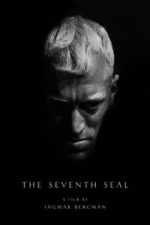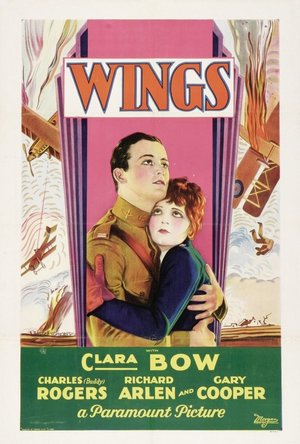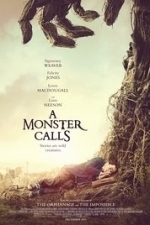Search
Search results
Terry Gilliam recommended The Seventh Seal (Det Sjunde inseglet) (1957) in Movies (curated)
Darren (1599 KP) rated Wings (1927) in Movies
Dec 8, 2019
Verdict: Beautiful Portray of Love & War
Story: Wings starts as two young men Jack Powell (Rogers) and David Armstrong (Arlen) both sign up to become fighter pilots in the First World War, they are from different backgrounds, with Jack working with his hands, which has seen him get the attention of Mary Preston (Bow) and David being rich, with the pair both seeking the attention of Sylvia Lewis (Ralston).
What starts out in rivalry soon becomes friendship between the two men as through their training, they learn they need to be on the same side and want the same thing from their time in the service. They are followed by Mary who has taken up a job where she delivers medical supplies to troops, all while her love for Jack continues to grow.
Thoughts on Wings
Characters – Mary Preston has worked with Jack Powell for years, they work on cars and her love for Jack is clear, she doesn’t get the attention she desires of him though, with the men at war, she uses her driving skills to deliver medical supplies, hoping to find Jack too, which sees her needing to find a way to act more lady like for the era. Jack Powell is from the working class bracket of people, he has always been great with cars and mechanics, which sees him sign up for the air force during world war 1, he will do what he can get impress the rich Sylvia to whom he loves and after years of rivalry with David, they will become friends. David Armstrong has come from a rich family, he is set to be marrying Sylvia one day if the families have their say, he sees Jack as a rival, until they fight side by side in the skies. Sylvia is the woman that both men are fighting for the attention of, they both see her as the perfect woman and will go to lengths to impress her.
Performances – This being a silent movie, all the work from the actors in the film comes from face expressions and movements, which they are all fantastic with, Clara Bow shows the pain of being in love with somebody who doesn’t want you, while Charles Rogers and Richard Arlen show the rivalry men can have when it comes to women.
Story – The story here follows two men from different backgrounds, one rich one working class, that are both fighting for the same woman, who join the air force to impress, where they become friends and learn the horrors of war. This is a story that is one that shows that love can be something people will always do crazy things for, it shows how the war bought enemies together and for a movie made in 1927, showed us a strong female character willing to go into war, unlike many films for years to come. Being a silent movie, we do get the expression and action doing a lot of the storytelling around the dialogue which is interesting because it keeps away a lot of unnecessary dialogue certain war films turn too.
Romance/War – The romance in this film shows how people will do strange things for love, you might not always see it right under your nose either, with the war being the main location that our characters all go to impress, the dog fight scenes are brilliant to watch, with the use of music making a big impact on the quality too.
Settings – The film uses the settings you would expect to see the war fought at, while we see the ground shots, it is when we are in the sky watching the dog fights that we get to feel the peril the characters are going through.
Scene of the Movie – Any of the dog fights.
That Moment That Annoyed Me – It does play into stereotypes of other nationalities.
Final Thoughts – This is a genius war movie that rightly deserved to win the first Oscar, it brings us a story that shows how much people would have risked for war and just how far they would go for love.
Overall: Brilliant.
Story: Wings starts as two young men Jack Powell (Rogers) and David Armstrong (Arlen) both sign up to become fighter pilots in the First World War, they are from different backgrounds, with Jack working with his hands, which has seen him get the attention of Mary Preston (Bow) and David being rich, with the pair both seeking the attention of Sylvia Lewis (Ralston).
What starts out in rivalry soon becomes friendship between the two men as through their training, they learn they need to be on the same side and want the same thing from their time in the service. They are followed by Mary who has taken up a job where she delivers medical supplies to troops, all while her love for Jack continues to grow.
Thoughts on Wings
Characters – Mary Preston has worked with Jack Powell for years, they work on cars and her love for Jack is clear, she doesn’t get the attention she desires of him though, with the men at war, she uses her driving skills to deliver medical supplies, hoping to find Jack too, which sees her needing to find a way to act more lady like for the era. Jack Powell is from the working class bracket of people, he has always been great with cars and mechanics, which sees him sign up for the air force during world war 1, he will do what he can get impress the rich Sylvia to whom he loves and after years of rivalry with David, they will become friends. David Armstrong has come from a rich family, he is set to be marrying Sylvia one day if the families have their say, he sees Jack as a rival, until they fight side by side in the skies. Sylvia is the woman that both men are fighting for the attention of, they both see her as the perfect woman and will go to lengths to impress her.
Performances – This being a silent movie, all the work from the actors in the film comes from face expressions and movements, which they are all fantastic with, Clara Bow shows the pain of being in love with somebody who doesn’t want you, while Charles Rogers and Richard Arlen show the rivalry men can have when it comes to women.
Story – The story here follows two men from different backgrounds, one rich one working class, that are both fighting for the same woman, who join the air force to impress, where they become friends and learn the horrors of war. This is a story that is one that shows that love can be something people will always do crazy things for, it shows how the war bought enemies together and for a movie made in 1927, showed us a strong female character willing to go into war, unlike many films for years to come. Being a silent movie, we do get the expression and action doing a lot of the storytelling around the dialogue which is interesting because it keeps away a lot of unnecessary dialogue certain war films turn too.
Romance/War – The romance in this film shows how people will do strange things for love, you might not always see it right under your nose either, with the war being the main location that our characters all go to impress, the dog fight scenes are brilliant to watch, with the use of music making a big impact on the quality too.
Settings – The film uses the settings you would expect to see the war fought at, while we see the ground shots, it is when we are in the sky watching the dog fights that we get to feel the peril the characters are going through.
Scene of the Movie – Any of the dog fights.
That Moment That Annoyed Me – It does play into stereotypes of other nationalities.
Final Thoughts – This is a genius war movie that rightly deserved to win the first Oscar, it brings us a story that shows how much people would have risked for war and just how far they would go for love.
Overall: Brilliant.
Bob Mann (459 KP) rated A Monster Calls (2016) in Movies
Sep 29, 2021
“I’ll. Be. Right. Here.”
The worst thing about this movie is its title. The second worst thing about this movie is its trailer. Both will either a) put people off seeing it (it succeeded in that with my wife for example) or b) make people conclude it is a ‘nice holiday film to take the kids to’, which is also an horrendous mistake!
This is a crying shame because it is a riveting drama and a superb piece of film-making by the Spaniard J. A. Bayona (“The Impossible”) that may well catapult it already into my top 10 films of 2017. But it is not, I would suggest, a film that is remotely suitable for kids under 10 to see, dealing as it does with terminal illness, bullying and impending doom. For this is a dark (read pitch black) but hauntingly beautiful film.
Lewis MacDougall, in only his second film (after last year’s “Peter Pan”) plays Conor – a young but talented and sensitive artist growing up as a 12 year old in the North of England with his single mum (Felicity Jones). She is suffering from an aggressive form of cancer and is forever medically grasping for a new hope (D’ya see what I did there?). Young Conor believes fervently that each new treatment will be ‘the one’ but the building tension, the lack of sleep and his recurrent nightmares are destroying him mentally and physically. As if this wasn’t enough, his distracted nature is leading to him being seriously bullied at school and there is the added stress of having to live in his grandmother’s pristine and teen-unfriendly house when his mother is hospitalised.
Towering over the nearby graveyard on the hill is an ancient yew tree and Conor is visited after midnight by this “monster” (voiced by Liam Neeson). Is he dreaming, or is it real? The tree dispatches wisdom in the form of three ‘tales’, with the proviso that Conor tell the tree the fourth tale which “must be the truth”.
A tale of grief, guilt and a search for closure, this is a harrowing but rewarding journey for the viewer.
The film is technically outstanding on so many levels:
the art design is superb, with the gorgeous ‘tale animations’ being highly reminiscent of the beautiful ones in “Harry Potter and the Deathly Hallows, Part 1”;
the use of sound is brilliant, with sudden silence being used as a weapon with which to assault the senses in one key sequence;
the cinematography by Oscar Faura (“The Imitation Game”) is faultless, capturing both the dreary reality in a Northern winter with the comparative warmth of the strange dream-like sequences;
the music by Fernando Velázquez is used effectively and intelligently to reflect the sombre mood;
the special effects team led by Pau Costa (“The Revenant”, “The Impossible”) shines not just with Neesen’s monster, but with the incorporation of the root and branch effects into the ‘normal’ surroundings.
As the BFG illustrated, having a whole film carried by a young actor is a bit of an ask, but here Lewis MacDougall achieves just that like a seasoned pro. His performance is nothing short of staggering and – although a brave move by the Academy – it would be great to see him nominated for a BAFTA acting award for this.
Confirming her position in the acting top-flight is Felicity Jones, heart-wrenching in her role of the declining mum, and Sigourney Weaver is also excellent as the po-faced but grief-stricken grandmother. Liam Neeson probably didn’t add much by getting dressed up in the mo-cap suit for the tree scenes, but his voice is just perfect as the wise old sage.
The only criticism of what is an absorbing and intelligent script (by Patrick Ness, who also wrote the graphical novel) is the introduction of Conor’s Dad, played by Toby Kebbell (Dr Doom from “The Fantastic 4”), who is literally flown in from LA on a flying visit but whose role is a little superfluous to the plot.
This is exactly what “The BFG” should have been but wasn’t. It draws on a number of potential influences including “Mary Poppins”/”Saving Mr Banks” and “ET”. Wise, clever and a thing of beauty from beginning to end, this is a treat for movie-goers and a highly recommended watch. However, if you have lost someone to “the Big C” be aware that this film could be highly traumatic for you….. or highly cathartic: as I’m not a psychiatrist, I’m really not that sure! Also, if you are of the blubbing kind, take LOTS of tissues: the film features the best use of a digital clock since “Groundhog Day” and if you are not reduced to tears by that scene you are certifiably not human.
This is a crying shame because it is a riveting drama and a superb piece of film-making by the Spaniard J. A. Bayona (“The Impossible”) that may well catapult it already into my top 10 films of 2017. But it is not, I would suggest, a film that is remotely suitable for kids under 10 to see, dealing as it does with terminal illness, bullying and impending doom. For this is a dark (read pitch black) but hauntingly beautiful film.
Lewis MacDougall, in only his second film (after last year’s “Peter Pan”) plays Conor – a young but talented and sensitive artist growing up as a 12 year old in the North of England with his single mum (Felicity Jones). She is suffering from an aggressive form of cancer and is forever medically grasping for a new hope (D’ya see what I did there?). Young Conor believes fervently that each new treatment will be ‘the one’ but the building tension, the lack of sleep and his recurrent nightmares are destroying him mentally and physically. As if this wasn’t enough, his distracted nature is leading to him being seriously bullied at school and there is the added stress of having to live in his grandmother’s pristine and teen-unfriendly house when his mother is hospitalised.
Towering over the nearby graveyard on the hill is an ancient yew tree and Conor is visited after midnight by this “monster” (voiced by Liam Neeson). Is he dreaming, or is it real? The tree dispatches wisdom in the form of three ‘tales’, with the proviso that Conor tell the tree the fourth tale which “must be the truth”.
A tale of grief, guilt and a search for closure, this is a harrowing but rewarding journey for the viewer.
The film is technically outstanding on so many levels:
the art design is superb, with the gorgeous ‘tale animations’ being highly reminiscent of the beautiful ones in “Harry Potter and the Deathly Hallows, Part 1”;
the use of sound is brilliant, with sudden silence being used as a weapon with which to assault the senses in one key sequence;
the cinematography by Oscar Faura (“The Imitation Game”) is faultless, capturing both the dreary reality in a Northern winter with the comparative warmth of the strange dream-like sequences;
the music by Fernando Velázquez is used effectively and intelligently to reflect the sombre mood;
the special effects team led by Pau Costa (“The Revenant”, “The Impossible”) shines not just with Neesen’s monster, but with the incorporation of the root and branch effects into the ‘normal’ surroundings.
As the BFG illustrated, having a whole film carried by a young actor is a bit of an ask, but here Lewis MacDougall achieves just that like a seasoned pro. His performance is nothing short of staggering and – although a brave move by the Academy – it would be great to see him nominated for a BAFTA acting award for this.
Confirming her position in the acting top-flight is Felicity Jones, heart-wrenching in her role of the declining mum, and Sigourney Weaver is also excellent as the po-faced but grief-stricken grandmother. Liam Neeson probably didn’t add much by getting dressed up in the mo-cap suit for the tree scenes, but his voice is just perfect as the wise old sage.
The only criticism of what is an absorbing and intelligent script (by Patrick Ness, who also wrote the graphical novel) is the introduction of Conor’s Dad, played by Toby Kebbell (Dr Doom from “The Fantastic 4”), who is literally flown in from LA on a flying visit but whose role is a little superfluous to the plot.
This is exactly what “The BFG” should have been but wasn’t. It draws on a number of potential influences including “Mary Poppins”/”Saving Mr Banks” and “ET”. Wise, clever and a thing of beauty from beginning to end, this is a treat for movie-goers and a highly recommended watch. However, if you have lost someone to “the Big C” be aware that this film could be highly traumatic for you….. or highly cathartic: as I’m not a psychiatrist, I’m really not that sure! Also, if you are of the blubbing kind, take LOTS of tissues: the film features the best use of a digital clock since “Groundhog Day” and if you are not reduced to tears by that scene you are certifiably not human.


